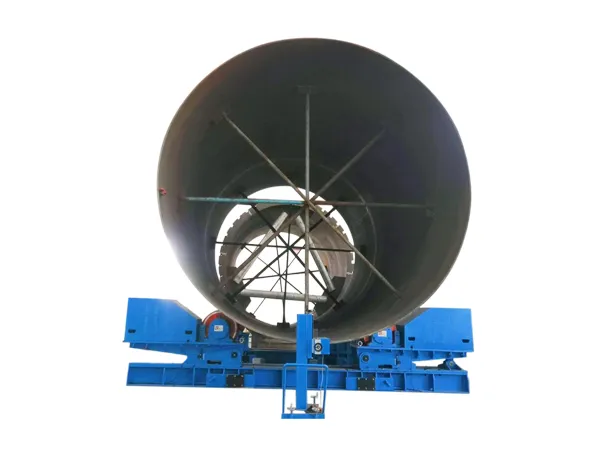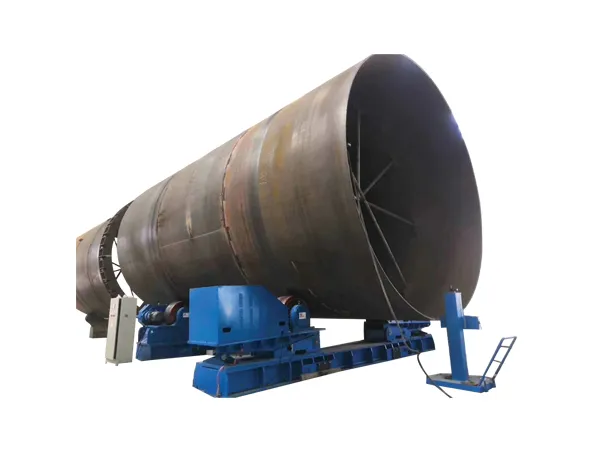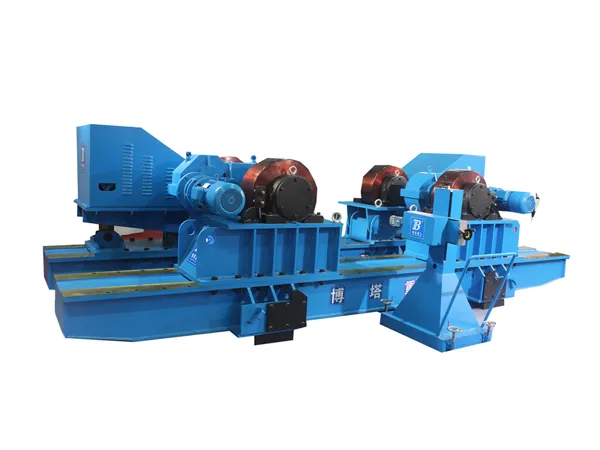Welding rotators are devices used in welding processes to rotate cylindrical workpieces, such as pipes, pressure vessels, or tanks, during the welding operation. The rotation helps achieve uniform and consistent welding, improves accessibility for the welder, and reduces the need for repositioning.

Workpiece Preparation
Ensure that the cylindrical workpiece to be welded is clean, free of contaminants, and properly aligned.
Prepare the welding joint by cleaning and beveling the edges if necessary.
Positioning the Workpiece
Place the cylindrical workpiece on the welding rotator, ensuring that it is securely and centrally positioned.
Adjust the rotator's rollers or wheels to support and grip the workpiece evenly.
Securing the Workpiece
Secure the workpiece in place using any clamping mechanisms provided by the welding rotator.
Ensure that the workpiece is stable and won't shift during rotation.

Setting Rotation Speed and Direction
Set the desired rotation speed of the welding rotator. The rotation speed is often determined by the welding procedure specifications (WPS) or the specific requirements of the welding project.
Choose the appropriate rotation direction (clockwise or counterclockwise) based on the welding requirements.
Weld Preparation
Prepare the welding equipment, including the welding machine, electrodes, shielding gas (if applicable), and any other necessary tools.
Set the welding parameters according to the welding procedure specifications.
Start Rotation
Begin rotating the workpiece using the welding rotator.
Monitor the rotation speed to ensure it aligns with the welding requirements.
Welding Process
Start the welding process as the workpiece rotates.
Move the welding torch or welding head along the length of the joint, applying the necessary welding heat and filler material.
The rotation of the workpiece helps achieve a consistent weld bead and ensures uniform heat distribution.
Continuous Monitoring
Continuously monitor the welding process, checking for proper penetration, bead shape, and overall weld quality.
Adjust the welding parameters or rotation speed if necessary.
Completion of Welding Pass
Complete a welding pass along the length of the joint.
If multiple passes are required, ensure proper overlap and tie-in between passes.
Rotation Reversal (if needed)
In some cases, it may be necessary to reverse the rotation direction to achieve complete coverage of the joint.

Post-Welding Inspection
After completing the welding process, conduct a post-weld inspection to ensure the weld meets the required standards and specifications.
Workpiece Removal
Stop the rotation of the welding rotator and remove the completed workpiece from the machine.
Repeat or Proceed to the Next Joint
If multiple welds are required, repeat the process for additional joints.
Otherwise, the welding operation for the specific workpiece is complete.
It's important to note that the specific process flow may vary based on the type of welding rotator, welding process (e.g., MIG, TIG, or submerged arc welding), and the requirements of the welding project. Always follow safety guidelines and manufacturer recommendations when operating welding equipment.
No. 1 Intersection of Chuangye Avenue and Weilai Avenue,
Yiyang County,Luoyang City, Henan Province, China
+86 400-0379-069
Copyright © 2023 An Automated Welding and Cutting Equipment Manufacturer Focusing on Welding Column Boom and Welding Rotator | All Rights Reserved Technical support: ShangXian